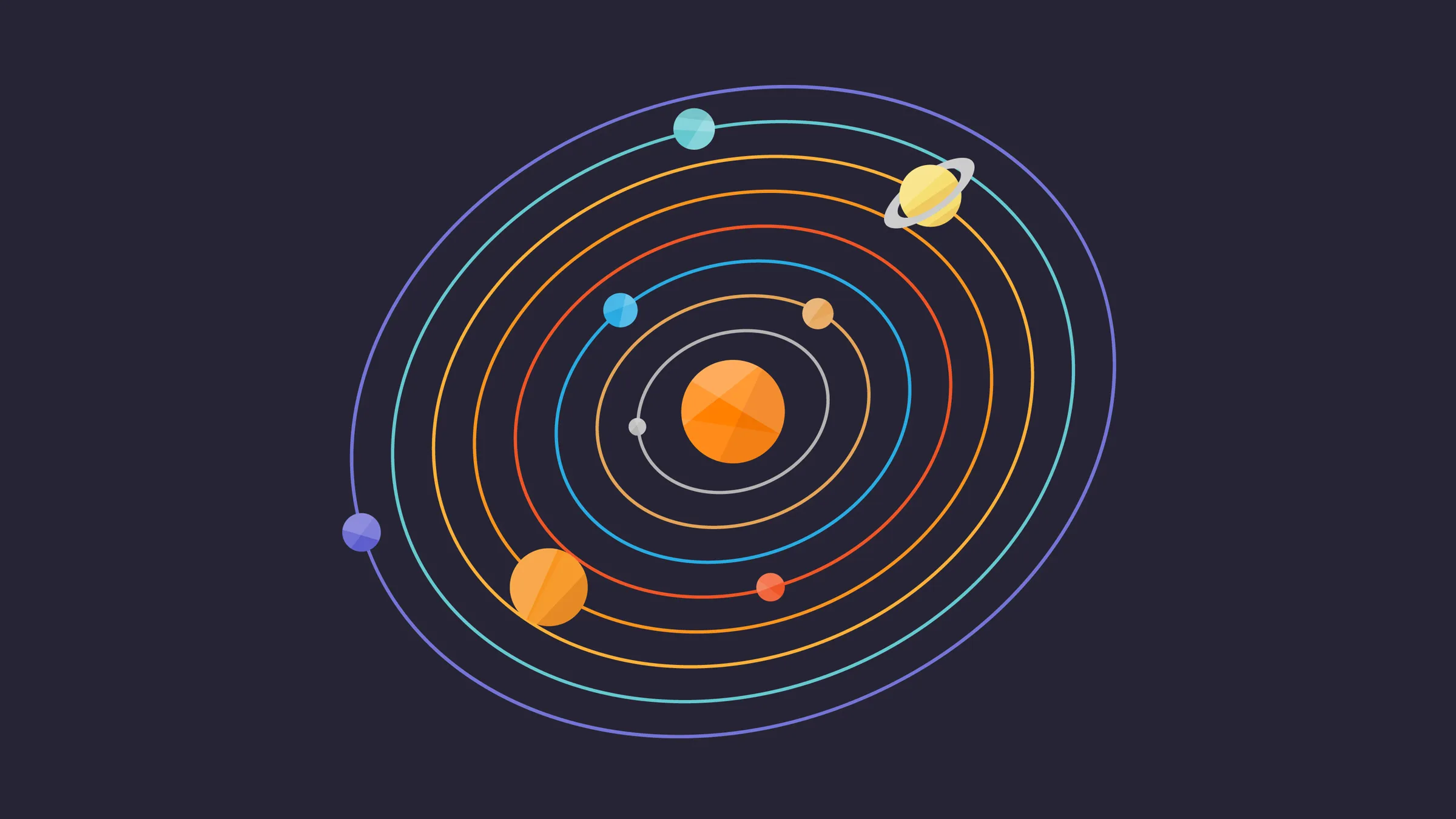

Exoplanets

What are exoplanets ?
Exoplanets, also known as extrasolar planets, are planets that exist beyond our Solar System. These distant celestial bodies orbit stars other than our Sun and are an essential focus of astronomical research. Exoplanets come in a wide variety of sizes, compositions, and orbital characteristics, and their discovery has revolutionized our understanding of planetary systems and the potential for life beyond our own solar neighborhood.
History
The discovery of exoplanets marked a significant breakthrough in the field of astronomy. In 1992, astronomers made the first-ever detection of exoplanets around a pulsar known as PSR B1257+12, defying expectations of their existence beyond our Solar System. Subsequent discoveries of exoplanets orbiting Sun-like stars have been ongoing for years, requiring continuous efforts and advancements in observation techniques. These discoveries have transformed our understanding of the cosmos and ignited a new era of exoplanet research, opening up countless opportunities for further exploration and insights into the diversity of planetary systems beyond our Solar System.
Morphology
Geomorphology
The study of geomorphology on exoplanets is an area of ongoing research and exploration. As we discover more exoplanets and gather data on their surface features, we hope to gain insights into the geological history and processes shaping these distant worlds. Understanding the presence of mountains, valleys, impact craters, volcanoes, and other surface formations on exoplanets can provide valuable information about their geological characteristics and evolution. The wide variety of exoplanet sizes, from gas giants larger than Jupiter to small, rocky planets similar in size to Earth or Mars, presents an exciting range of potential geomorphological features awaiting exploration and discovery.
Location
As of now, the majority of exoplanets have been discovered within thousands of light-years from the solar system. These distant worlds have been detected around stars in various regions of our galaxy and beyond. With ongoing advancements in observational technology and methods, astronomers are continuously searching for exoplanets in distant star systems, contributing to our growing knowledge of planetary systems throughout the Milky Way and other galaxies. The study of exoplanets has opened up exciting opportunities for understanding the prevalence and diversity of planets beyond our Solar System and exploring their potential for habitability and unique characteristics.
Physico-chemical properties
Exoplanets exhibit a diverse range of physico-chemical properties, presenting unique and intriguing characteristics. These properties include:
Composition: Exoplanets vary in their chemical makeup, with some being predominantly rocky, similar to Earth, while others are primarily composed of gas, like Jupiter and Saturn. The composition of exoplanets influences their density, size, and overall structure.
Atmosphere: Many exoplanets possess an atmosphere, which is essential in understanding their climate and habitability. The presence of specific gases, such as carbon dioxide, methane, or water vapor, can indicate the potential for life or provide insights into the planet's geological processes.
Temperature: The physico-chemical properties of exoplanets are significantly influenced by their distance from their host stars, as this determines their surface temperature. Some exoplanets orbit close to their stars and experience scorching temperatures, while others exist in colder, more distant regions.
Age: The age of exoplanets can offer clues about their formation and evolutionary history. Younger exoplanets may still be in the process of cooling and settling into their final form, while older ones may have undergone significant geological changes over time.
Magnetic Field: The presence and strength of a magnetic field on exoplanets can influence their atmosphere and protect against harmful space radiation.
Understanding the physico-chemical properties of exoplanets is essential in determining their potential for habitability and in comparing them to the planets within our Solar System. The study of these properties contributes to the broader field of exoplanet research, shedding light on the diverse and fascinating worlds that exist beyond our cosmic neighborhood.
Temperature
Exoplanets exhibit an astonishing range of temperatures, from scorching hot to freezing cold. Some exoplanets orbit very close to their host stars, experiencing extreme heat that can be intense enough to boil metal. These are known as "hot Jupiters." On the other hand, some exoplanets are located in distant regions from their stars, experiencing frigid temperatures that can freeze gases like methane and water vapor. These diverse temperature extremes present intriguing challenges for understanding the diverse range of exoplanetary climates and the potential for extreme weather phenomena.
The wide temperature range observed on exoplanets provides valuable insights into their proximity to their host stars and their atmospheric conditions. These temperature extremes have implications for the habitability and evolution of exoplanets, shedding light on the dynamic and diverse nature of planetary systems beyond our Solar System.
Age
Exoplanets exhibit a wide range of ages, varying from relatively young, around 250 million Earth years or even less, to remarkably ancient, with ages up to 13 billion years. These diverse age ranges provide valuable insights into the formation and evolution of exoplanetary systems, offering clues about their geological history and potential habitability. Understanding the age of exoplanets is essential in the broader context of planetary science, as it provides valuable information about the processes that shaped these distant worlds and their place within the cosmic timeline.
Force fields

Gravitational force
Recent studies conducted by researchers from UPM and UV have revealed an intriguing discovery about the surface gravity of exoplanets with masses between 1 and 100 times that of Earth. Surprisingly, these exoplanets exhibit gravitational forces that are remarkably similar to terrestrial gravity. This finding has significant implications for our understanding of exoplanetary systems and their potential habitability, as it suggests that a wide range of exoplanets may have surface conditions comparable to those found on Earth. This discovery also adds to the excitement and interest in studying exoplanetary atmospheres and geology, providing valuable insights into the diverse nature of planetary systems beyond our Solar System.

Magnetic field
In the vast array of exoplanets, some are characterized by the presence of a magnetic field, while others lack such a crucial feature. Planets with a magnetic field, known as "magnetically active" exoplanets, possess a protective shield called a magnetosphere. This magnetosphere serves to deflect harmful solar radiation and cosmic particles away from the planet's surface, preserving its atmosphere and potentially supporting conditions conducive to life.
On the other hand, there are exoplanets without a significant magnetic field, referred to as "non-magnetic" or "magnetically inactive" exoplanets. Without the protective shield of a magnetosphere, these planets are more susceptible to the effects of stellar winds and harmful solar radiation. Their atmospheres may experience greater erosion and loss of volatile gases, potentially influencing their habitability and long-term climate.
The study of both magnetically active and non-magnetic exoplanets contributes to our understanding of the diverse range of planetary systems beyond our Solar System. It allows scientists to explore the various factors that influence the habitability and conditions on exoplanets, offering valuable insights into the potential for life beyond Earth.
Motions

Orbit
Exoplanets display a remarkable diversity in their orbital characteristics. Some exoplanets are found in extremely close orbits around their host stars, resulting in "years" that last only a few Earth days. These are known as "hot Jupiters" or "ultra-short period planets." On the other hand, some exoplanets reside in multi-star systems, orbiting around two or even more stars simultaneously. These unique orbital configurations offer fascinating opportunities to study the dynamics and interactions within exoplanetary systems and broaden our understanding of planetary formation and evolution. The wide range of exoplanetary orbits underscores the richness and complexity of planetary systems beyond our Solar System.
Rotation
Exoplanets, akin to planets within our Solar System, exhibit diverse rotation characteristics. Some exoplanets rotate rapidly, completing a full rotation in just a few hours, while others rotate more slowly, taking several days or even longer. This rotation rate significantly influences their climates, weather patterns, and geological processes.
Some exoplanets are tidally locked with their parent stars, meaning one side of the planet always faces the star, while the other side remains in perpetual darkness. This phenomenon results from the gravitational forces between the planet and its star, causing the planet's rotation to synchronize with its orbital motion. Tidally locked exoplanets may experience extreme temperature differences between their illuminated and dark hemispheres, leading to distinct weather patterns and potentially affecting their habitability.
Understanding the rotation rates of exoplanets and their tidal locking status is crucial in characterizing their physical properties and environments. These factors play a significant role in shaping the climate, atmospheric circulation, and geological activity on exoplanets, ultimately providing valuable insights into their potential habitability and conditions beyond our Solar System.
Satellite systems

Moon system
Just like our Solar System with its abundant moons, exoplanets can also possess moon systems. These moons, known as exomoons, orbit around their host exoplanets, and their presence adds to the diversity and complexity of exoplanetary systems. Studying exomoon systems can provide valuable insights into the formation and evolution of planetary systems beyond our Solar System. As astronomers continue to explore and discover more exoplanets and exomoons, we gain a deeper understanding of the dynamic and fascinating worlds that exist beyond our cosmic neighborhood, further expanding our knowledge of the universe.
Ring system
Ring systems are not exclusive to planets in our Solar System; some exoplanets have also been found to possess ring systems. One such exoplanet is 1SWASP J140747.93-394542.6 b, a gas giant located approximately 434 light-years away from Earth in the constellation Centaurus.
1SWASP J140747.93-394542.6 b is an intriguing example of an exoplanet with a ring system. Its discovery was made using the transit method, which involves observing the planet as it passes in front of its host star, causing a temporary dip in the star's brightness. The presence of rings around 1SWASP J140747.93-394542.6 b was detected by studying the light curve of the star during transits.
The existence of ring systems on exoplanets adds to the diverse and captivating nature of these distant worlds. By studying exoplanetary ring systems, astronomers gain valuable insights into the dynamics of planetary systems beyond our Solar System and the mechanisms that lead to the formation and maintenance of such rings. These discoveries enrich our understanding of the vast array of planetary systems in the cosmos and provide new avenues for exploration and investigation in the realm of exoplanetary science.
Author: William Homier
Editor: William Homier
Sound credit goes to Dillon Dickerson.
This page was last edited on 31 July 2022, at 22:10 (HAE).
Sources:

